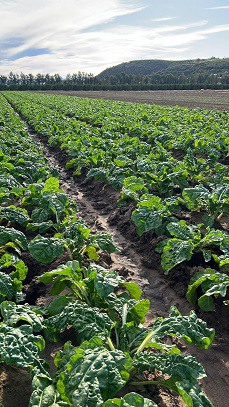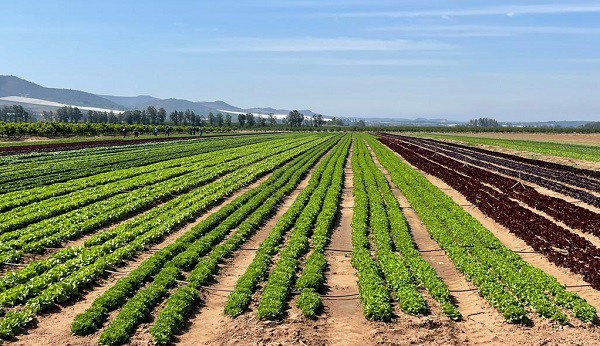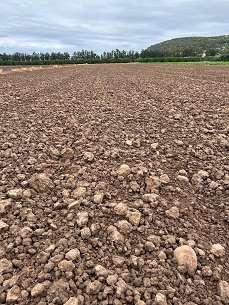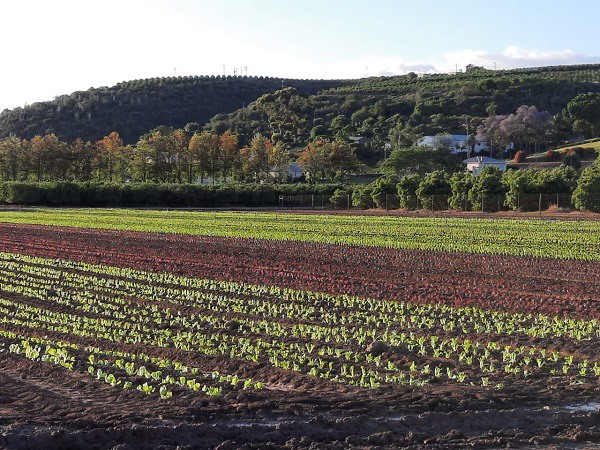 Eight years of drought has had a “fatal impact” on vegetable production in the Eastern Cape’s Gamtoos Valley, says Noelie le Roux.
Eight years of drought has had a “fatal impact” on vegetable production in the Eastern Cape’s Gamtoos Valley, says Noelie le Roux.
“There are only two or three farmers left who plant vegetables in the Gamtoos,” he says.
On his farm called Spes Bona (“we could do with some of that”, he remarks) vegetables make up 60% to 70% of his enterprise, with citrus bringing up the balance. Citrus now accounts for 90% of the Gamtoos’ agricultural output.
A number of vegetable farmers have given up and at least two large vegetable packhouses are standing empty, and the vegetable farmers who remain have had to make some tough decisions to keep going, like renting land outside the Gamtoos Valley in places like Uitenhage and Thornhill to the west, or in the Langkloof to the east where water availability is better.
Noelie doesn’t have sufficient water to sustain both his vegetables and citrus; the 80% water restriction of the past two years leaves them with 20% of their quote for the year which is, he says, “a drop in the ocean of what we need.”
Like the remaining vegetable farmers, Noelie has had to rent land in three different locations outside the Gamtoos Valley in order to fulfill his supermarket programme commitments for the entire brassica range, sweet corn and salads, and it has come at a heavy cost, both in terms of money and time.
“We’re driving hundreds of kilometres every day to where we’re planting and harvesting vegetables. Every day my workers are on the road for at least two hours. We harvest and we bring it back to the farm to pack and then on to Port Elizabeth. To Uitenhage, for instance, it’s a 180km round trip to Uitenhage where before we’d produce and harvest within a radius of 15km.”
Previously their produce would have gone all to way to Gauteng but they don’t have the volumes to supply more than the Eastern Cape anymore.

Borehole water unsuitable for overhead irrigation
Charl Malan of the farm Waterwiel grows salads and herbs for retailer pillow packs and he, too, has had to spread his production to areas with more water.
“We’re planting in the Gamtoos Valley during the winter months with our 20% water allocation, while in the summer, when the vegetables use a lot of water, we plant elsewhere. It has been an expensive and a difficult decision to take, adding to our diesel costs at a time when all our input costs have gone up steeply.”
Sinking boreholes has helped citrus orchards to pull through, but unfortunately it hasn’t been the same lifesaver for vegetable farmers, Charl points out, because of the high salt content of the valley’s borehole water. The overhead irrigation systems require water from the Kouga Dam, which is only 14.7% full.
The Gamtoos Valley received 50mm of rainfall during March, much better than last year March when they were irrigating continuously, he remarks, which would have been impossible amid this year’s severe power cuts.
“Our farm was designed to pump at night during the period of lower demand, to make use of the lower Ruraflex electricity tariffs,” he says, pointing out that water often needs to pumped up slopes in the hilly terrain of the valley. “Now we have to pump at any time when we have electricity and salad needs to be irrigated every day in summer but if you don’t have power on your pivots you have to invest in generators.”
Quality of soil deteriorates Charl mentions to another victim of the drought: the clay soil of the valley.
Charl mentions to another victim of the drought: the clay soil of the valley.
“Usually I’d be following a continuous programme of soil restoration through planting teff or oats in rotation with the salad. Now I just don’t have the water for that and I can see that the quality of my soil has taken a serious knock. It will take years to restore the soil.”
Right: the prevalence of clods indicates a degraded soil structure
Ironically last year he again attempted to plant grasses in rotation. The planting fortuitously coincided with a spot of rain – just for locusts to descend and eat it down to the nub in a day.
“Because of the drought we’re just taking out from the soil, not putting anything back, but we have no choice. We’re just doing the best we can do.”
Vegetables outside citrus season used to provide steady income
Traditionally most Gamtoos citrus farmers would plant vegetables during the off-season, tiding over their workers with steady income, but like Noelie they just can’t spare water to raise a vegetable crop anymore.
He notes that he has had to downsize his work force by 20% over the past three years; some farmers have cut their staff by 60% outside the citrus season as a result of the drought.

“It’s had a tremendous impact on the finances of the Gamtoos and with it comes theft: citrus is stolen for resale purposes while people steal vegetables just to have something to eat. Many people come into the area looking for work but there just aren’t as many employment opportunities available anymore, especially outside the citrus season when many farmers would’ve planted vegetables.”
It is a very difficult time for the communities of the Gamtoos Valley, Noelie observes. “It’s actually the human impact that’s emerged as the greatest problem for the Gamtoos.”
